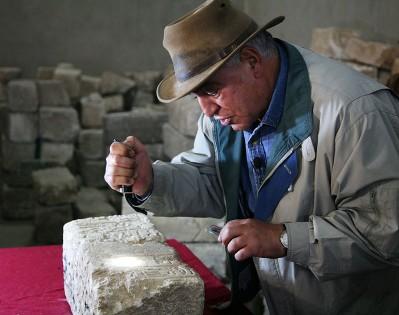In January of this year, during the political upheaval in Cairo, thieves broke into the Egyptian Museum and took eighteen objects (four were eventually recovered) and damaged many others, including two sculptures of Tut. Egypt’s Minister of State for Antiquities Affairs and famed Egyptian archaeologist Zahi Hawass, who was recently reinstated to his post, has enthusiastically commended the Egyptian youth who protected the museum during the chaotic night and who may have prevented the looting of additional artifacts. On his blog, Hawass says, “One of the most heartening things about recent events was the extent to which regular Egyptians were willing to go to protect their cultural heritage.”
Tomorrow night at LACMA, Hawass will discuss the current state of ancient sites and museums in Egypt, as well as his ongoing involvement with new projects and discoveries.

Zahi Hawass
Hawass has given talks at LACMA in the past and never ceases to surprise us—often bringing images of day-old discoveries and sometimes making big announcements. In his talk at LACMA in 2004, he made the first announcement about the King Tut exhibition traveling to the states to the surprise of everyone—including some LACMA staff! He was deeply involved with the organization of that exhibition; before it opened at LACMA in June 2005, Hawass and an Egyptian team examined a CT scan of the body of King Tut, the boy-king believed to be the twelfth ruler of ancient Egypt’s eighteenth dynasty who died at the age of 19. Prior to these CT scans, it was believed that the young ruler had been murdered, but the scans indicated that Tut’s death may have instead been caused by a badly broken leg that gave way to infection.
In this video, Hawass looks at some of the gorgeous objects found inside King Tut’s tomb and the symbolism they held for the ruler and for Egypt.
Alex Capriotti, Marketing Associate



